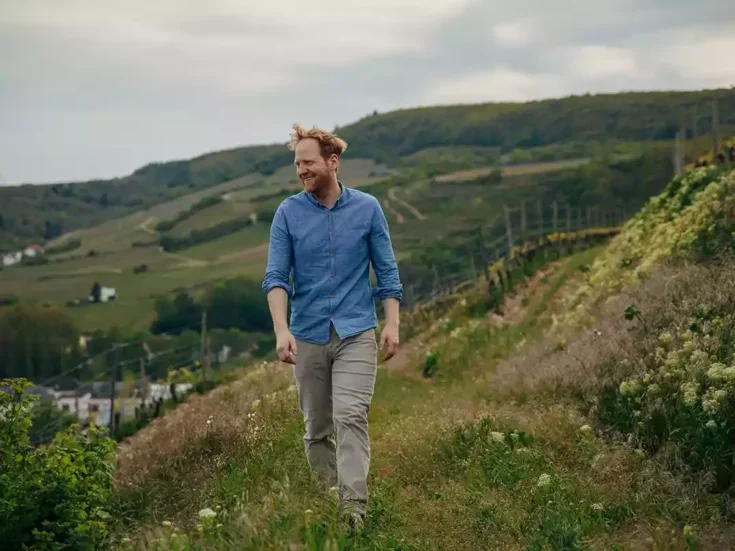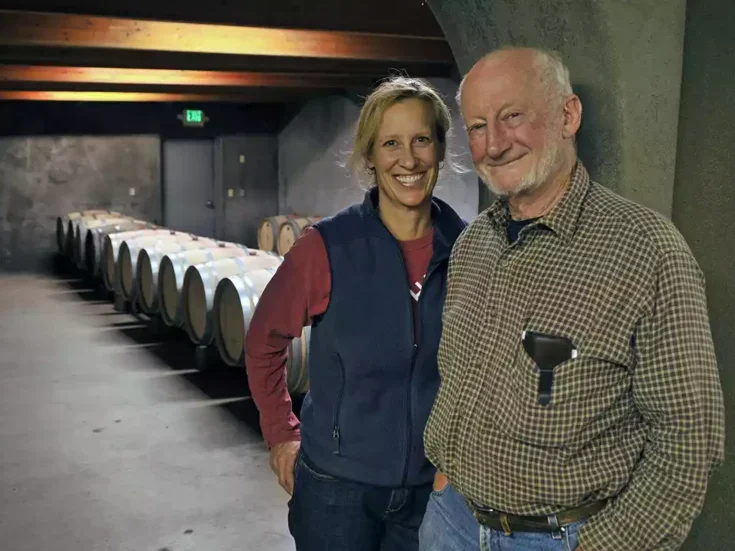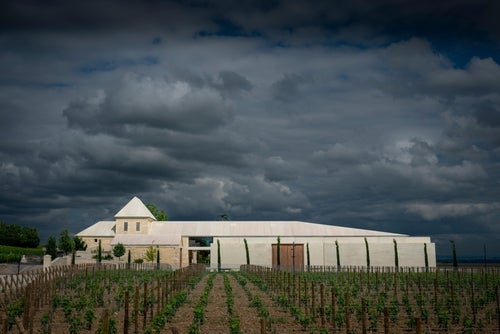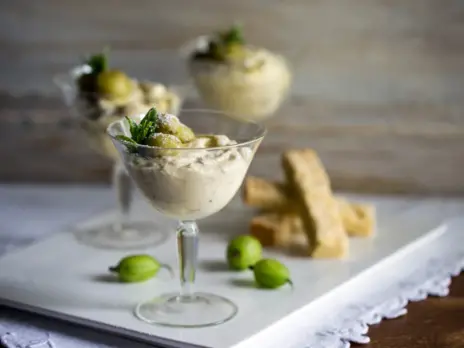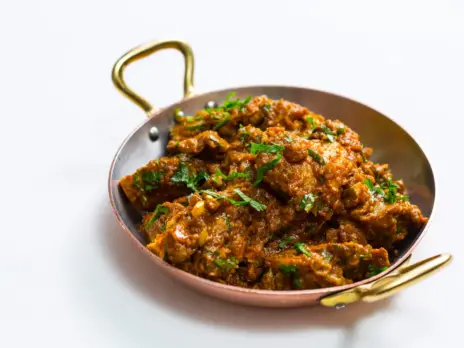
To mark the 80th anniversary of Kumeu River estate, Paul Brajkovich was in London in Spetember 2024 to host a tasting of their estate and single-vineyard Chardonnays.
The Brajkovich family are pioneers of the wine trade in New Zealand. The origin of this estate goes back to 1944 when Mick and Katé Brajkovich, having emigrated from Croatia a few years earlier, were able to purchase a small plot of land in Kumeu near Auckland and settled there with their son Maté. In the early days, the wines were made with hybrids, but the focus changed in the 1980s to Chardonnay. The estate remains a family affair, with Maté’s children now managing the business. Michael Brajkovich, New Zealand’s first MW and an alumnus of Roseworthy, has made the wines for 40 years.
Soon after the estate changed its name to Kumeu River Wines in 1986 and started exporting, Farr Vintners brought its Chardonnay to the UK and has followed the estate every vintage since 1990. I walked along the Thames to Farr’s glamorous riverside location for what promised to be a fascinating tasting stretching back to the 2002 vintage.
“During the 1970s our holdings in Kumeu were only 5ha [12 acres] of vines, plus what grapes we could purchase locally,” explained Michael when I caught up with him after the tasting. “In the 1980s, this was augmented by purchasing grapes from Gisborne. We started new plantings in Kumeu in 1981, increasing the holdings to about 15ha [37 acres]. In 1983 we purchased a 35ha [85-acre] vineyard from Corbans in Kumeu. Over the next few decades, this block was subdivided, replanted, and rationalized to a point where it now makes up about 13ha [32 acres] of high-quality vineyard.”
Kumeu River Wines quickly established a reputation for high-quality, stylish Chardonnay from the 1980s on, so I wondered why there are not more estates in the region? “Very few wine producers stayed,” explained Paul. “They moved to Gisborne and farther afield, while we stayed and bought more land.” There are only six other wineries: Soljans, Hunting Lodge, Coopers Creek, Wamarie, Westbrook, and Twin Totara.
In fact, according to New Zealand Wine Growers statistics, there are only 285ha (705 acres) of vineyard in the whole of the West Aukland region of which Kumeu is a subregion. Of these, only 71ha (175 acres) are planted to Chardonnay. Gisborne, by comparison, has 1,245ha (3,076 acres) of vines, with 582ha (1,440 acres) of Chardonnay.
The Kumeu sub-region is niche—a peri-urban rural zone, still outside the suburbs, but just 20km (12 miles) from central Auckland as the crow flies. Real estate is at a premium—NZD $1.3 million per hectare from a recent valuation for the purposes of widening the motorway. It is fortunate for the Brajkovich family that most of their land is owned, although 15% of Kumeu River’s production comes from leased vineyards.
When it became impossible to expand further in Kumeu, the Brajkovich family purchased an existing 28ha (70-acre) vineyard in Hawkes Bay in 2017, now managed by Paul Brajkovich, an engineer by profession. How does Michael compare the two?
“Kumeu has a cool maritime climate, heavily influenced by the proximity of the oceans to the west and east—quite different to Hawkes Bay, which is also cool-climate, but located on the east coast, it is protected from the prevailing westerly weather patterns. It therefore has less rainfall than Kumeu and warmer temperatures. In Kumeu, 30°C [86°F] is a very hot day, and we usually only get one or two a year. We haven’t had any over the past six years. The max has been 29.6°C [85°F].”
Paul remarked, “Aukland gets rain. It’s humid. We deal with this with an open canopy, leaf-plucking, and hand-harvesting. The 2008 had some botrytis characters, but this is rare.” He adds, “We get the sunshine levels, so there’s ripeness, but not the heat to burn the acidity. We hardly ever get a day over 30°C [86°F]. In 2022, we had no more than 27°C [80.6°F].”
Several unique sites
As for the soil, the vineyards lie close to the Kumeu River, so they are generally alluvial; a heavy, clay-based loam with a sandstone subsoil, which is sufficiently water-retentive that irrigation is unnecessary. Coddington and Hunting Hill vineyards are slightly elevated above the flood plain.
I asked Michel to define the special identity of Chardonnay from this terroir. “Dry-farmed clay soils give the wine a depth of texture and length that is difficult to achieve otherwise. Each site is unique, and there is always a different blend of citrus and stone-fruit characters that gives the wines complexity and personality.”
So, let’s consider the individual sites. Coddington was planted in the mid-90s with 1.8ha (4.4 acres) of Chardonnay and 1.4ha (3.5 acres) of Pinot Gris. The Chardonnay was initially included in the estate blend. “It’s a north-facing suntrap on heavy clay, which makes ripe and luscious wine, but with fine acidity that prevents it becoming too rich,” said Paul. This vineyard is rented, so the clock may be ticking.
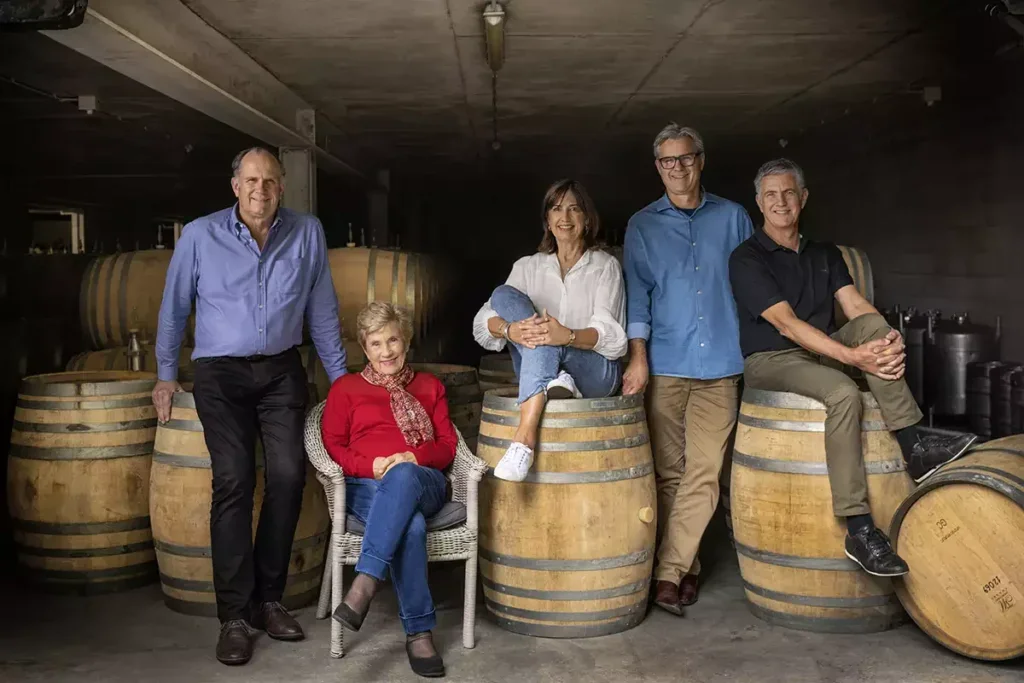
Hunting Hill is a 3.4ha (8.4-acre) parcel initially planted in 1981 with Chardonnay, Cabernet Franc, and Sauvignon Blanc, but when virus struck and the vineyard needed uprooting, it was replanted in 2000 with Chardonnay clone UCD15. “We pick it first,” said Paul, “and yet it always has the highest alcohol. It is slightly elevated, with a southwest orientation, which is where the breezes come from, so it is slightly cooler, which gives it a very fragrant and precise character, with lemon-lime blossom perfume. A tight and linear style. We think the iron in the soil is responsible for the saline character.”
Maté’s is the original vineyard, although the vines were pulled out in the late-1970s. “With the success of Kumeu River in the 1980s, it made sense to replant with Chardonnay in 1990. It was always significantly different from the other vineyards. The most densely concentrated and rich of the Chardonnays we make,” commented Paul, who added that the Mendoza clone and low-vigor rootstocks contribute to this character. It is the lowest and the most sheltered of all the single vineyards, 2.8ha (7 acres) on a slight, north-facing slope.
Translating the terroir
For all the cuveés, the fruit is hand-harvested and whole-bunch-pressed, with a cool settle before transferring to barrel. Michael has relied on natural yeast for fermentation since 1986. The wines remain in barrel for 10–11 months, when they receive regular stirring. The notes I was sent described this as once or twice each week. After racking and blending, the wines have a further 3–6 months in tank on fine lees before being filtered and bottled under screwcap. Michael was a pioneer of screwcap in New Zealand. He has marginally increased the free SO2 at bottling, from 30–35mg/l free in the 2002 and 2004, to 40mg/l since 2006.
I find the young wines quite oaky and richly textured, with the exception of Hunting Hill. They will benefit from bottle-age for this to recede. I asked Michael about his approach to bâtonnage and oak. He replied, “We don’t use bâtonnage nowadays as systematically as we used to. We do it more according to taste and perceived need, which is much less now than in the 1990s, for example. After the MLF is complete, we add sulfur dioxide and bung the barrels down, then try not to open them until they are racked in January.”
The oak treatment is tailored for each vineyard. For Maté’s vineyard there is a combination of Tonnellerie de Mercurey and Seguin-Moreau, normally around 30% new. Coddington has 100% Gillet, usually 25% new, heavy-toast barrels. “With the luscious character of this vineyard, this works and the fruit eats up the oak,” observed Paul, although I wonder if it doesn’t weigh it down. Hunting Hill is aged in François Frères barriques, which will work a treat with this terroir, even if I always find François Frères quite powerful at first. “We have chosen these barrels after decades of fine tuning… chosen to best reflect the characters of the vineyard, which are floral, citrus, mineral, and elegant,” said Michael, who likes medium to heavy toast. There is usually 25% new, but in 2023, none was used. “This was partly because of the lighter character of the vintage and also because the smaller crop meant that a much greater proportion of one- and two-year-old oak was available.”
Within the timeframe of this 80th anniversary tasting, Michael said the biggest change in winemaking came in the 2016 vintage, “when we started using crossflow (tangential) filtration, rather than lenticular filters. This technology is amazing, and is very gentle on the wine, neither adding nor subtracting anything significant.”
We tasted the Estate Chardonnay and the single-vineyard wines from the 2020, 2019, 2014, 2013, 2010, and 2007 vintages, as well as the 2004 and 2002 Estate and Maté’s Vineyard.
Generally, I preferred the Estate Chardonnay to Coddington, except for the 2014 vintage. I find the Estate Chardonnay less opulent, more nuanced, and generally a bit fresher. My favorite single-vineyard wine is the stylish, straight, and tangy Hunting Hill, with its floral notes and lively energy. This is the sort of wine I like to drink. In more recent vintages, it is on a par for quality with Maté’s, and maybe even surpasses it. The vineyard has matured, and maybe the winemaking is better tailored to the terroir. It benefits from some bottle age, but even as a young wine, it eloquently expresses its terroir. Among the more mature vintages, however, Maté’s Vineyard had the edge, probably because the vineyard is older than Hunting Hill. Maté’s Vineyard makes denser, more profound wine, but this demands time to evolve in bottle to reveal its best expression, whereas Hunting Hill is more accommodating in its youth. It’s great that Hunting Hill and Maté’s are opposites, truly expressing the differences in their terroir; high-toned and racy Hunting Hill, versus Maté’s show of power and muscularity.
I never like comparing wines from elsewhere to Burgundy, but I guess it is still the gold standard for Chardonnay and producers just can’t help themselves. Paul compares Coddington to Meursault, Hunting Hill to Puligny, and Maté’s to Corton-Charlemagne.
After alluding to terroir comes the inevitable price comparison, which has more teeth. By comparison with Burgundy, Kumeu River Wines are very well-priced for their quality and expression of terroir. In terms of aging capacity, Paul remarked, “We usually recommend 8–10 years, with 7–8 years the sweet spot, but I may have to revise this, as the wines are going further now: maybe 10–15 years.” I would agree that Mate’s has an aging capacity of 10–15 years, and more recent vintages of Hunting Hill will match that, while for the Estate and Coddington, I think the 7–10-year timeframe is about right.
I wondered how Michael envisages the future for Kumeu River and for the estate? “We will continue to do what we do in Kumeu, but the most exciting new development is our vineyard at Rays Road in Hawkes Bay, for both Chardonnay and Pinot Noir. Over the next few years we will see more and more fruit coming from this limestone terroir, and they are already delivering us very exciting, vibrant wines.”
Tasting Kumeu River Chardonnay
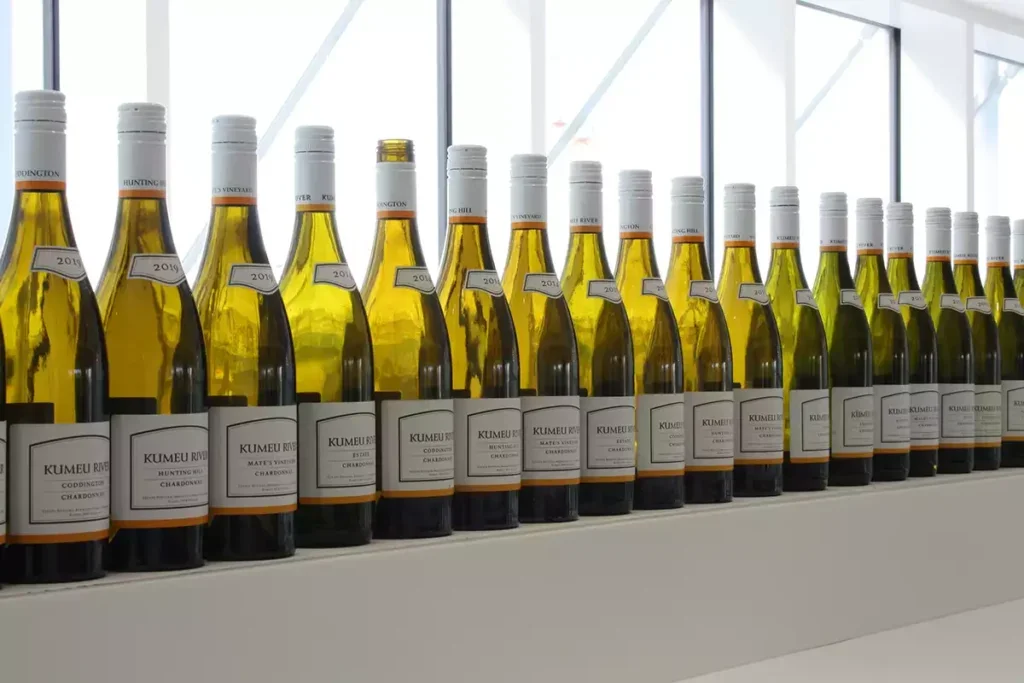
Flight 1: Kumeu River 2020 and 2019 vintages
In the first flight, we compared 2020 and 2019—both good vintages. What was the main difference during the season? “2019 was a season out of the box, just about faultless. After a wet spring, things really dried out after Christmas, and it got drier and drier toward harvest. It was warmish, up to 29.3°C [84.7°F], but most important, dry. 2020 was very similar, but with an even longer dry period, and slightly warmer temperatures: two days over 30°C [86°F],” said Michael.
Both 2020 and 2019 would benefit from another year or two in bottle. The 2020 vintage is particularly compact and intense, both rich and fresh. The 2019 is riper, typically 14% ABV versus 13.5% ABV for the 2020. The 2019s are lovely wines, maybe not as dynamic as the 2020s, but they seem to be coming together more quickly than the 2020s, for slightly earlier drinking. Both will age well. Of the two, 2020 may last longer, but 2019 should not be far behind.
2020 Estate Chardonnay
Lush, citrus aroma, with a hint of peach. Rather an exuberant strike. This is richly rounded and rather buttery. The palate is underscored with a firm slice of citrusy acidity. It pushes into the finish where the toasty oak shows. 2025–28. | 87
2020 Coddington Chardonnay
The aroma combines ripe stone fruit with buttered toast. Plenty of energy on the attack. This is punchy and vital; robust, even. A generous style. I don’t find it as long on the finish as the Estate wine, which, at the moment, shows more dimension. But let it settle, as it’s likely to reveal more complexity with age. If the 2014 Coddington is any indication, this should last longer than the estate. 2025–30. | 87
2020 Hunting Hill Chardonnay
Some reserve here. Altogether more upright, with its bright floral notes on the nose. Hits the palate straight and lime-fresh. I do like the singing acidity and the mineral shimmer, where it stretches into a precise finish. A waft of lime flower in the wake of light minerality. Delightful and expressive now, but you really should wait longer to enjoy this at its peak. 2026–35. | 94
2020 Maté’s Vineyard Chardonnay
Earthier aroma. Darker on the palate, too, sultry, as distinct from the Hunting Hill’s airy, floral, and mineral character. Maté’s palate is the most compact of the three single-vineyard wines. This density and matter carry into the finish. It’s certainly rich but layered, with sufficient acidity. Savory. Almost chewy. 2027–35. | 94
2019 Estate Chardonnay
Just a touch of evolution; the aroma of toasted brioche is inviting, making this more interesting than the 2020 now. It’s ripe and evolving quite quickly but seems a bit fresher than the 2020. There are notes of new-mown hay. Lively, citrusy freshness carries the palate. A hint of stony mineral on the finish. A nicely balanced wine, not too rich, but well-rounded; ripe but fresh enough. 2024–27. | 87
2019 Coddington Chardonnay
Full and ripe, a touch tropical, with exotic notes of rambutan on the palate. Seems quite soft, probably because the richness is enveloping the acidity. I’d like to see more energy. This rather let down the 2019 flight, as it now feels a bit flabby. So, a slightly lower score. 2024–27. | 86
2019 Hunting Hill Chardonnay
This glides onto the palate. Super-silky and elegant, threaded with fine acidity. I do like this streamlined and finely woven wine. Sparkles on the finish, which is persistent. Of the single-vineyard wines, this offers the greatest finesse. A filigree wine, with light showing through. A close call by comparison with the 2020. 2025–32.| 93-94
2019 Maté’s Vineyard Chardonnay
This show more evolution than the Hunting Hill on the aroma, but it is still very compact and dense on the palate. Of the two vintages, the 2020 Mate’s Vineyard has the edge, thanks to its vigor and persistence. 2026–32. | 93
Flight 2: Kumeu River 2014 and 2013 vintages
Paul remarked, “Like 2019 and 2020, 2014 was always generous and approachable and has remained the same. The wines show the bottle-development we expect to see with the 2019s and 2020s. 2013 was another excellent vintage, but very small due to a frost—Maté’s and Hunting Hill are the most vulnerable. We flew helicopters in 2013, but there was no inversion layer, so this had no effect, and we had just one third of normal production. [Following this, a frost-fan was installed.] But the summer was one of the best, and the wines were always intense and concentrated, including the acidity. They were tough and austere on release, but with bottle-age, they came out.”
I quite like the 2013 Estate and Hunting Hill, but this vintage is hard-core and, some may feel, a little too severe. 2014 is generally much easier as a vintage.
2014 Estate Chardonnay
Honeyed aroma. A touch of oxidation on the palate, which has leaned out maybe too far, but the wine is still pleasant enough, with a lightly salty character on the finish. | 85
2014 Coddington Chardonnay
Golden hay and grilled macadamia nuts. This certainly has an alluring aroma. Richly rounded and glossy. Quite weighty, full-bodied and sumptuous. It’s a showy, rather than a refined, wine, but it is now ten years old. Jolly pleasant, but I won’t keep it much longer. | 87-88
2014 Hunting Hill Chardonnay
What’s notable about Hunting Hill is its stability and longevity. There is not much aromatic evolution on the 2014 or 2013; the 2013 is maybe more citrusy. Gorgeous fruit; a straight yet rich palate, with a cut of acidity that carries the finish on a thread of brushed steel. Fully mature, but no hurry to drink this over the next three or four years. | 92-93
2014 Maté’s Vineyard Chardonnay
Compact and powerful, this has real tension. Punches into the finish and demonstrates just how well Maté’s ages. I definitely prefer the 2014 to the 2013. I can see this evolving over another five years. | 93-94
2013 Estate Chardonnay
I prefer this to the 2014 estate. There is still some energy and a last, dying flush of fruit to balance the steely edge. | 87
2013 Coddington Chardonnay
A lot more evolved on the aroma than the 2014 Coddington, grilled nuts and toasty notes combining with a herbal note. Zesty spring on the attack; a lively palate, straighter and a lot more austere than the 2014. But it’s very disjointed. | 86
2013 Hunting Hill Chardonnay
This is leaner than the 2014, a whiplash across the palate; tight and edgy and quite severe on the finish. Not for the faint-hearted, but if you like intensity and acidity, this is a cracker and maybe a touch longer than 2014. I like it. Now until… who knows. | 93-94
2013 Maté’s Chardonnay
This is quite severe. Very compact and intense. I find this a little harsh and it doesn’t quite have the follow through, so I would not keep it longer. The 2014 is definitely better. | 92
Flight 3: Kumeu River 2010 & 2007 vintages
Like 2013, 2010 was affected by frost, and the crop was only half the normal size, but the summer was good. “2007 a was colder vintage, especially at budburst and flowering. It was dry but not very warm. Like 2013, it was always fresher, and in the citrus rather than the peachy spectrum,” remarked Paul.
I found the 2010 Estate and Coddington Chardonnays past their best, while the 2010 Hunting Hill has a juicy palate with plenty of energy and is surprisingly fruity. It’s worth noting that Hunting Hill was replanted in 2001, so these wines come from quite young vines. I am really impressed with this vineyard, but the pick of the 2010s is Maté’s.
2010 Maté’s Vineyard Chardonnay
Compact, dense, and punchy on the palate. It’s savory and quite austere. The miso finish is strong and persistent. | 94
2007 Estate and 2007 Coddington
These are fully mature wines, but fresher and seemingly holding better on the mid-palate than the 2010s. I like the nutty Coddington, which has a hint of marmite to finish.
2007 Hunting Hill
A little weaker on the nose than the 2010, but the palate is still singing. Sweetness, brightness, brisk acidity, and lively energy. Pure and still citrusy. A touch saline to finish. | 91-92
2007 Maté’s Vineyard
Still super-vibrant. Punchy and bold on both nose and palate. The mid-palate is dense and layered. This wine will continue to evolve. Pushes through into an assertive finish. It has much more depth and persistence than the (young-vine) Hunting Hill. | 94
Flight 4: 2004 & 2002 Estate and Maté’s
I didn’t like the faded 2004s very much. The 2002s were much more interesting. We tasted them under both screwcap and cork. The Estate wine under cork was faulty, but the screwcap version was bright, straight, and salty—not bad at all. Under cork, Maté’s Vineyard was much more evolved and toffee-ish, while the screwcap bottle was generous and still had plenty of oomph. “We don’t recommend people keep the wines this long,” said Paul. “They cross into secondary aromas and textures, and personally I would drink the wines earlier.” As would I.

